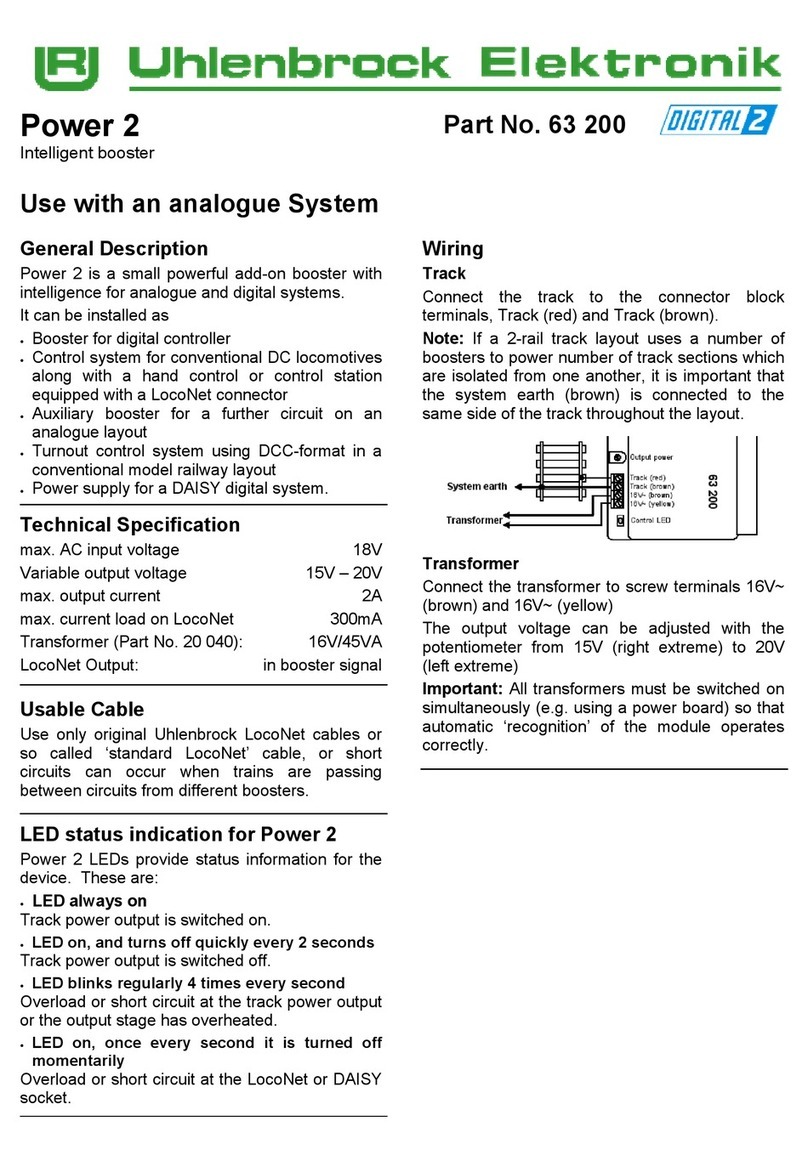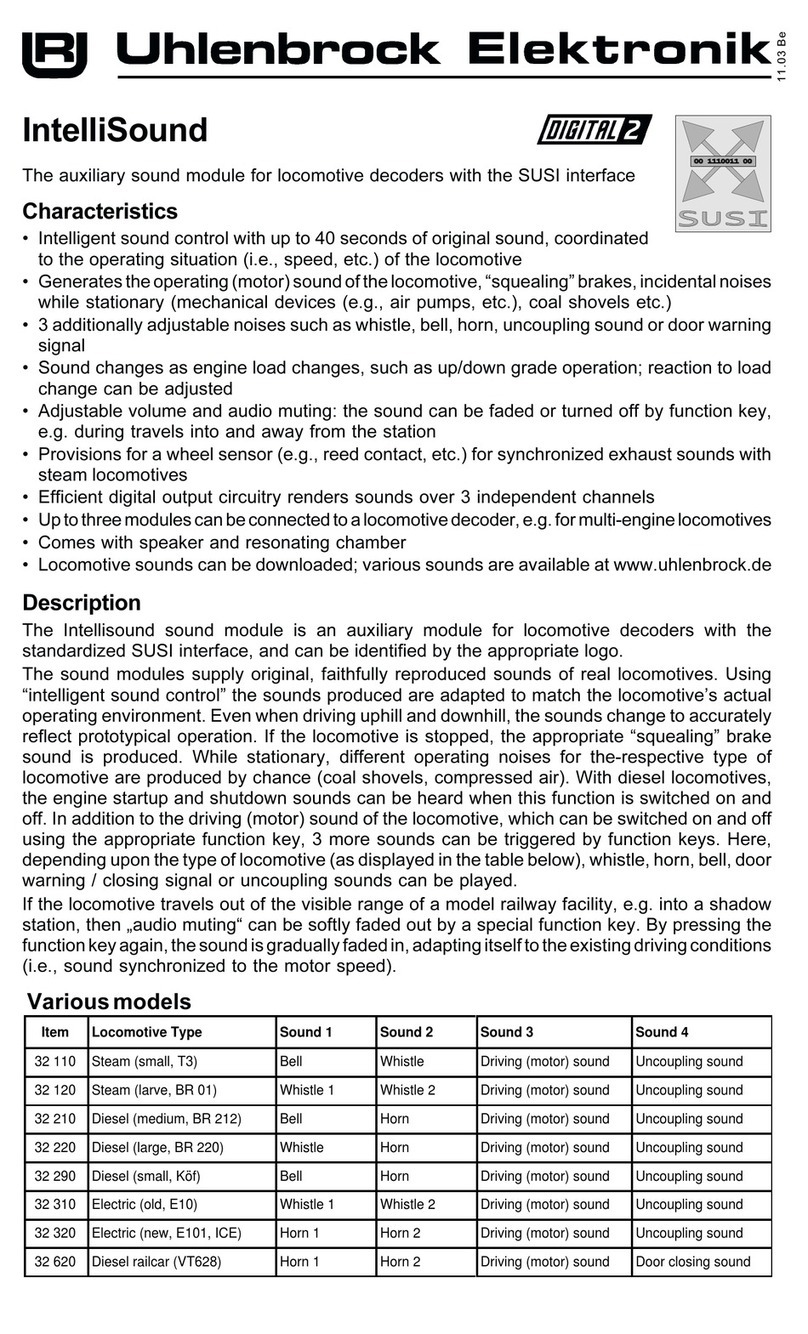
DAISY
8
starting from that speed – the same applies, of course, for all
locomotive functions (e.g., the locomotive lights, functions, etc.).
Driving direction
The locomotive driving direction can be changed by pressing the speed
dial. The current driving direction is shown by the two triangular LEDs
next to the [Stop] key. The LED pointing to the right lights up if the loco
driving direction is “forward”. No LED will appear lit if the selected
locomotive has the “Motorola old” format.
If the loco direction is changed by pressing the speed dial, the
locomotive first stops, then changes its driving direction.
[Stop] key
The [Stop] key can be used for turning off/on power to the layout. If the
layout power is off, the display shows 4 blinking decimal points. If the
layout power is off due to a short, then the display shows the outer and
the middle decimal points blinking in an alternating pattern.
[function] and [off] keys
The [function] key turns on the lights of the currently controlled
locomotive, while the [off] key turns them off. If the locomotive lights are
off, pressing the [off] key turns them on only as long as the [off] key
remains pressed.
[f1] through [f4]
In drive mode, these keys allow controlling special functions F1 through
F4 of the currently selected locomotive. Pressing one of these keys
toggles the status of the corresponding function. The four LEDs above
those keys show the current status of the corresponding function.
After pressing the [Locomotive] key, these four LEDs show the status of
functions F5 through F8 (and, keys [f1] through [f4] can be used to
control those – as long as the [Locomotive] key remains pressed).
However, if the DAISY is either part of the DAISY-System (i.e., it is
connected to a Power2 through its “DAISY” connector) or is connected
as add-on throttle to a DAISY-System, then functions F5 through F8 are
not supported — and, therefore, cannot be controlled.
In turnout mode, these keys allow controlling four turnouts at a time.
The four LEDs show the status of the corresponding turnout, indicating
either ‘green’ or ‘red’.
2.2 Drive mode
The drive mode of the DAISY is activated by pressing the [Locomotive]
key. In drive mode one can drive locomotives, change their speed
and/or driving direction and control their lights and additional functions.
One can also select a different locomotive for control through the
DAISY.





























